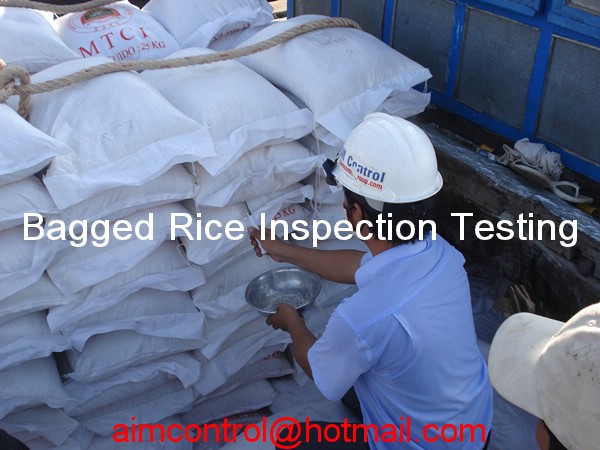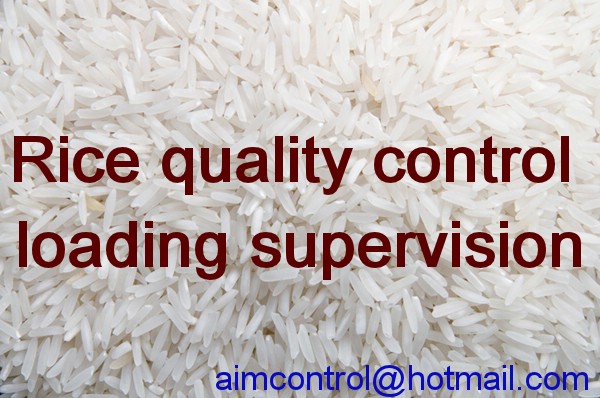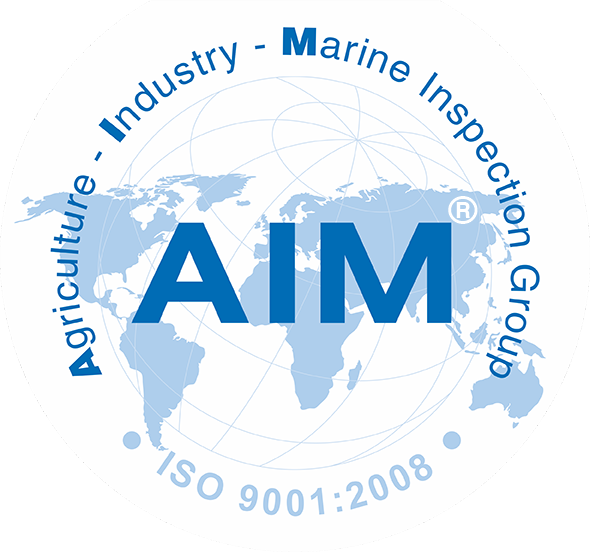A loss prevention of rice cargo claims in Vietnam Thailand
A loss prevention of rice cargo claims in Vietnam Thailand
Vietnam and Thailand are two countries in Asia where exporting of a white rice biggest the world, AIM Control (AIM Group®) offer a loss prevention of rice cargo claims in Vietnam Thailand
WHITE RICE CARGO OF BAGS (OR IN BULK) HANDLING
Rice is normally transported as break-bulk cargo in bags; usually 20 – 25 - 50 kg woven propylene bags, allowing for easy handling and stowage. Bagged rice cargo is susceptible to a number of problems, including wet damage, tearing and theft. The following considerations must be kept in mind. Email us: cargoinspection@aimcontrolgroup.com

When dealing with bagged rice cargo:
Rice should only be filled into clean and dry bags
All bags should be the same size to prevent shortage claims later.
The bags must be kept in a dry condition at all times. Additional waterproof material should be used to protect the bags if stored in an open area prior to loading.
As the bags used are typically white coloured, damage to the cargo is easily detectable as dark stains appear on the bags in the event of damage. Therefore, simple visual quality inspections of the cargo to eliminate loading of all damaged, cut/ torn and heavily stained bags is a simple loss prevention technique that should be applied.
Spare empty bags should be kept on board to fill with sweepings in case the bags tear or get damaged during discharge.
AIM Control (AIM Group®) surveyors should be appointed to supervise the loading and discharging operations and prevent stevedore theft of the cargo facilitating by cutting the bags.
Ensure individuals bags are counted during the tallying process, and not just the slings.
RICE MOISTURE:
One of the main causes of claims that arise when dealing with rice cargoes is its moisture content.
When harvested, rice typically contains 20% - 28% moisture. One of the main causes of claims that arise when dealing with rice cargoes is its moisture content.
When harvested, rice typically contains 20% - 28% moisture, depending on where it is grown and the atmospheric humidity at the time. It must be dried to about 12 – 14% within 48 hours of harvest before it can be loaded. Therefore, when rice cargo is taken from new crop, it is likely to have a higher degree of moisture, increasing the likelihood of moulding, lumping and spoilage. The optimal moisture content of the rice depends on the desired storage duration. The longer the storage duration, the lower the optimal moisture content should be. Port congestion and inefficiencies at the load and discharge ports often result in the cargoes remaining onboard for prolonged periods. That means good voyage planning prior to shipment forms part of effective loss prevention.
MIXING DIFFERENT MOISTURE CONTENT RICE
Often lower moisture content rice is mixed with higher moisture content rice to give overall optimal moisture content. This can, however, prove to be damaging during transport as the damp rice affects not only the undamaged rice in close proximity, but also other rice in the hold by increasing the overall moisture content.

THE IMPORTANCE OF HOLD VENTILATION:
This kind of damage is also very often caused by poor stowage and lack of protection of the bags from the ships’ bulkheads. It is, therefore, important to ensure all holds are adequately ventilated. This is especially important during a voyage to West Africa, where the air temperature and seawater temperature reduces, and day and night air temperatures differ substantially. When the vessel passes from the warm Indian Ocean into the cooler Atlantic Ocean, seawater temperature drops, leading to condensation.
RAIN AND ITS CONSEQUENCES:
Several cases have been reported in sea ports in which considerable damage was caused by water infiltration into the ship’s holds during rain. Tropical rainfalls are often very sudden. Loading and discharge should not be undertaken during periods of bad weather. Monitoring weather forecasts, the crew should be available and equipped to close hatch covers at the first sign of rain.
TEMPERATURE:
Rice cargo is also susceptible to becoming mouldy if its temperature is greater than 25°C. Higher temperatures result in the rice sticking together and aid in metabolic processes that affect the cargo’s quality. The optimal temperature at which rice should be transported is between 5 - 25°C.
STOWAGE AND DUNNAGE:
In respect to stowage, the cargo shall be stowed in a way that ventilation channels are not blocked. Proper dunnage shall be arranged and checked (plastic or bamboo) so as to ensure the cargo is sufficiently protected from the ship’s bulkhead. Appropriate dunnage may prevent the bags from coming into contact with the hold surfaces, in the event that condensation takes place. Many claims in West Africa arise due to wet damage of the cargo, and ensuring proper dunnage helps to reduce such claims. The small expense incurred in providing adequate dunnage serves to reduce cargo claims in the future.
It is understood from Masters that at loading ports, the shippers/charterers instruct the crew not to open the cargo holds for some days after fumigation. In such cases, the Master/Owners shall require written instruction and lodge a Letter of Protest in respect to the moisture which the cargo may suffer as a result of condensation produced in the closed holds. Salinity tests shall be performed if moisture is observed.

Other service :
- Cargo Holds Condition Survey (11/11/2024)
- Rice foods quality inspection and certificate (10/11/2024)
- Controlling commodity shortages and investigating damage claims (10/11/2024)
- Vessel Hull, Machinery, Structure, Equipment Surveys (10/11/2024)
- Container loading check supervision (10/11/2024)
- Property Casualty Insurance Claim investigation (10/11/2024)
- Sea-fastening inspection surveyor (10/11/2024)
- Inspector Surveyor Investigator Tally clerk Supervisor Diver in Vietnam (10/11/2024)
- Pre-loading survey, Tally, Loading Supervision (10/11/2024)
- Inspection in Hai Phong (10/11/2024)







